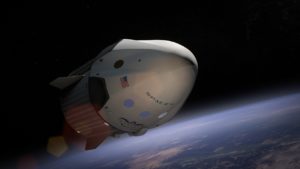The New Space Race
The New Space Race
Space: The final frontier. Or is it? The U.S. is again taking a serious look at space exploration, but there are many factors to consider. President Trump last summer called for the Department of Defense to move space operations to a sixth military branch, though funding such an effort would require congressional approval.1
The U.S. Air Force has projected a budget of $13 billion over five years would be needed to create a Space Force.2 Beyond such a Space Force, the Department of Defense, NASA and both public and private companies are all active in space-based projects, such as replacing the aging 24-satellite Global Positioning System (GPS), deploying “micro” satellites for a global Wi-Fi system and exploring farther reaches of space.3
Currently, space represents an economy of more than $350 billion, according to analysts at Morgan Stanley, who predict the industry could expand to $1.1 trillion by 2040. This is due both to national security and growing tech communications such as wireless data.4
Investing in space ventures might potentially rank as a higher risk asset allocation category, so it’s important to consider whether such an investment would be appropriate for your portfolio within the context of your goals, risk tolerance and investment timeline. If you’d like help evaluating your risk level relative to your financial goals, we’re happy to help.
Analysts say much of this space economy will flow through already well-known companies such as Adobe, Amazon, Apple, Boeing, Honeywell, Intuit, Lockheed Martin, Microsoft, Northrop Grumman, Qualcomm, United Technologies and others.5
Other companies in the private sector are looking at ways to develop the “citizen astronaut” industry – and boldly go where no one has gone before – such as Orion Span, Axiom Space and Bigelow Aerospace.6
Content prepared by Kara Stefan Communications.
1 Nick Stockton. Wired. Sept. 8, 2018. “The 19th Century Argument for a 21st Century Space Force.” https://www.wired.com/story/space-force-mahan-argument/. Accessed Sept. 21, 2018.
2 Marcus Weisgerber. Government Executive. Sept. 21, 2018. “USAF’s Space Force Cost-Estimate Is Likely Too High: Analyst.” https://www.govexec.com/technology/2018/09/usafs-space-force-cost-estimate-likely-too-high-analyst/151456//. Accessed Sep. 21, 2018.
3 Ian Prior. U.S. Trust. Aug. 29, 2018. “Investing in the Modern (Space) Age.” https://www.ustrust.com/articles/investing-in-the-modern-space-age.html. Accessed Sept. 21, 2018.
4 Kamaron Leach. Bloomberg. Aug. 23, 2018. “Space Investors Urged to Get Their Heads in the Clouds.” https://www.bloomberg.com/news/articles/2018-08-23/space-investors-urged-to-get-their-heads-in-the-clouds. Accessed Sept. 21, 2018.
5 Ibid.
6 Jamie Carter. South China Morning Post. Sept. 18, 2018. “Hotels in space — the final frontier for luxury travel or pure science fiction?” https://www.scmp.com/lifestyle/travel-leisure/article/2164493/hotels-space-final-frontier-luxury-travel-or-pure-science. Accessed Sept. 21, 2018.
We are an independent firm helping individuals create retirement strategies using a variety of insurance and investment products to custom suit their needs and objectives. This material is intended to provide general information to help you understand basic financial planning strategies and should not be construed as financial or investment advice. All investments are subject to risk including the potential loss of principal. No investment strategy can guarantee a profit or protect against loss in periods of declining values.
The information contained in this material is believed to be reliable, but accuracy and completeness cannot be guaranteed; it is not intended to be used as the sole basis for financial decisions. If you are unable to access any of the news articles and sources through the links provided in this text, please contact us to request a copy of the desired reference.
640477C
